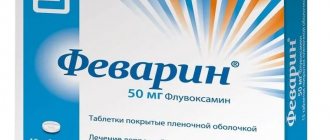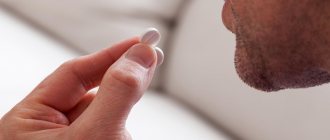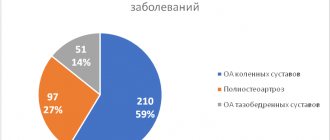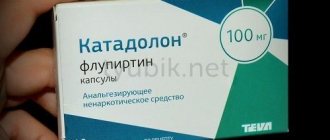What does Miramistin protect against?
The effect of the drug is detrimental to:
- Many aerobic and anaerobic gram-positive and gram-negative microorganisms.
- A number of pathogenic fungi, including yeast and yeast-like fungi.
- Some viruses, in particular the herpes virus.
- Most pathogens that cause sexually transmitted infections: chlamydia, trichomonas, gonococci, etc.
Among other things, the drug also affects hospital strains of pathogenic bacteria that are highly resistant to antimicrobial therapy. Therefore, Miramistin in such cases helps to increase the effectiveness of antibiotic therapy.
Shelf life and storage
The total shelf life of the drug is 3 years. After opening, it is recommended to use this product within a month.
Miramistin is an effective drop for the treatment of eye infections. They quickly have a therapeutic effect and prevent the spread of the infectious process. The drug is usually well tolerated by patients and rarely causes side effects.
Author's rating
Author of the article
Alexandrova O.M.
Articles written
2100
about the author
Was the article helpful?
Rate the material on a five-point scale!
( 2 ratings, average: 5.00 out of 5)
If you have any questions or want to share your opinion or experience, write a comment below.
What is Miramistin used for?
The drug is widely used by doctors of several specialties:
- Traumatologists and surgeons use the solution to prevent the suppurative process, as well as to treat purulent wounds.
- Obstetricians and gynecologists prescribe Miramistin for the treatment of postpartum and postoperative sutures, as well as as part of the treatment of inflammatory diseases of the female genital organs.
- Dermatovenerologists use the product for the auxiliary treatment of fungal diseases such as dermatomycosis and mucosal candidiasis.
- Urologists treat acute and chronic urethritis and urethroprostatitis with Miramistin.
- ENT doctors prescribe the drug as part of complex therapy for tonsillitis, laryngitis, otitis, and inflammatory diseases of the sinuses.
- Dentists use the solution to treat stomatitis, gingivitis, and periodontitis. Miramistin is also a means of preventing inflammatory diseases of the oral cavity.
The drug is also used to treat burns and for antiseptic treatment of wounds before dermatoplasty.
Finally, Miramistin is a popular and very effective means for individual prevention of sexually transmitted diseases.
Nosological classification (ICD-10)
- A53.9 Syphilis, unspecified
- A54 Gonococcal infection
- A56 Other chlamydial sexually transmitted diseases
- A59 Trichomoniasis
- A60 Anogenital herpetic viral infection [herpes simplex]
- B35.3 Mycosis of the feet
- B36.9 Superficial mycosis, unspecified
- B37.0 Candidal stomatitis
- B37.2 Candidiasis of the skin and nails
- B37.3 Candidiasis of the vulva and vagina (N77.1*)
- B37.4 Candidiasis of other urogenital sites
- H60.8 Other external otitis
- J01 Acute sinusitis
- J02.9 Acute pharyngitis, unspecified
- J03.9 Acute tonsillitis, unspecified (angina agranulocytic)
- J04.0 Acute laryngitis
- J31.2 Chronic pharyngitis
- J32.0 Chronic maxillary sinusitis
- J35.0 Chronic tonsillitis
- J37.0 Chronic laryngitis
- K05.6 Periodontal disease, unspecified
- K12 Stomatitis and related lesions
- N34.1 Nonspecific urethritis
- N41.9 Inflammatory disease of the prostate, unspecified
- N71 Inflammatory diseases of the uterus, except the cervix
- N76 Other inflammatory diseases of the vagina and vulva
- O86.1 Other genital tract infections after childbirth
- P15.9 Birth injury, unspecified
- T30 Thermal and chemical burns of unspecified location
- T79.3 Post-traumatic wound infection, not elsewhere classified
- Z100* CLASS XXII Surgical practice
- Z97.2 Presence of dental prosthetic device (complete) (partial)
How to take Miramistin
Before you start using the drug, you must carefully read the instructions for use. If the package contains a sprayer, then first remove the cap from the bottle, then install the spray nozzle and perform 1-2 control presses. After this, the product is ready for use.
Miramistin has certain features of use for each type of pathology. Thus, when treating wound surfaces, including burns, this product can be used to treat both the wound itself and tampons for dressings.
For the treatment of ENT diseases, in particular, sore throat and pharyngitis, Miramistin is used both for irrigation and for gargling. The frequency and duration of use is indicated by the doctor based on the severity of the pathological process. Another method of treating diseases of the ENT organs is inhalation with Miramistin.
For diseases of the oral cavity, in particular for stomatitis, rinse with Miramistin 3-4 times a day.
Comparative characteristics
For a visual analysis of the properties and characteristics of drugs, it is suggested that you familiarize yourself with the tabular data.
Difference between Miramistin and Chlorhexidine:
| Comparative characteristics of drugs | ||
| Name of comparison criteria | Miramistin | Chlorhexidine |
| Price category | price 299-450 rubles per 150 ml bottle | 10-20 rubles per 100 ml bottle |
| Areas of use |
|
|
| Indications |
|
|
| Contraindications |
|
The product is not used to treat the ear in the area of the eardrum and deeper, as well as the eyes. |
| Adverse reactions |
|
|
Why is Miramistin prescribed in gynecology?
In gynecology, the drug can be used for:
- Impregnation of vaginal tampons. This method of administering an antiseptic shows good results in the treatment of cervical erosion, metritis, and endometritis.
- Douching. The method is widely used for the treatment and prevention of sexually transmitted diseases.
- Introduction into the genitourinary canal using a catheter is a method of treating urethritis and cystitis. The manipulation can only be performed by a person with medical education.
- Electrophoresis sessions. Physiotherapeutic procedures using Miramistin help cure pelvic pathologies such as salpingitis, oophoritis, etc.
The method of treatment and duration of therapy are selected by the attending physician in each specific case.
special instructions
Before instilling the solution, contact lenses must be removed. You can put them on again approximately 15 minutes after the procedure. Most ophthalmologists recommend not wearing soft lenses for the entire duration of treatment with Miramistin.
After using eye drops, you do not need to drive for half an hour. This is due to a temporary decrease in visual acuity.
After surgery and eye drops, you should not touch or rub your eyes with your hands.
Self-administration of the drug is prohibited: before starting treatment, consultation with a specialist is necessary.
How to use Miramistin in venereology
The solution effectively prevents sexually transmitted diseases. However, it should be remembered that Miramistin will provide the expected result only if it is applied within two hours after sexual intercourse.
To prevent sexually transmitted diseases, a bottle with a special urological attachment is used. It is recommended for men to inject 2-3 ml of solution into the urethra, for women - 1-2 ml. Additionally, the drug is administered into the vagina in a volume of 5-10 ml using a gynecological applicator. The skin of the external genitalia is also treated with the solution. After treatment, it is recommended to refrain from urinating for 2 hours.
Release form
Solution for topical use 0.01%. In PE bottles with a urological applicator, with a screw cap, 50, 100 ml. In PE bottles with a urological applicator, with a screw cap, complete with a spray nozzle, 50 ml. In PE bottles, equipped with a spray pump and a protective cap or complete with a spray nozzle, 100, 150, 200 ml. In PE bottles with a screw cap with first opening control, 500 ml. 1 fl. in a cardboard box.
For hospitals: in PE bottles with a screw cap with first opening control, 500 ml. 12 fl. without a pack in a cardboard box for consumer packaging.
At what age can Miramistin be used for children?
According to the instructions, the solution is prescribed for the treatment of pharyngitis and tonsillitis for children over 3 years of age. As a rule, in childhood, the throat is irrigated with Miramistin using a spray. The dosage of the drug increases in proportion to the age of the child. Duration of use is from 4 to 10 days, the period depends on the severity of the disease.
Do not drop the solution into the child’s nose - this can lead to irritation of the mucous membranes.
Many parents are interested in the question of whether infants can be treated with this drug. The list of contraindications for Miramistin does not include infancy, so the use of the drug is possible. However, you should not self-medicate: before use, you must consult a pediatrician.
Indications for use
The scope of the medicine is quite extensive. It is used in the following medical areas:
- traumatology;
- otolaryngology;
- surgery;
- dentistry;
- obstetrics;
- dermatology;
- venereology;
- gynecology.
Diseases for which Miramistin is used:
- gonorrhea;
- genital candidiasis;
- sinusitis;
- genital herpes;
- tonsillitis;
- trichomoniasis;
- otitis;
- mycoses;
- laryngitis;
- syphilis;
- infections after childbirth;
- staphyloderma and streptoderma;
- urethroprostatitis;
- bedsores;
- urethritis;
- trophic ulcers;
- wounds;
- frostbite;
- fistulas;
- second and third degree burns.
Miramistin ointment is prescribed for the treatment of mycoses of the mucous membranes and skin, staphyloderma, streptoderma. It is also used as one of the drugs in the treatment of skin lesions, burns and wounds.
Many people are interested in whether Miramistin is an antibiotic or an antiseptic. Let's figure it out.
Can Miramistin be used during pregnancy?
According to the results of numerous studies, this drug does not have an embryotoxic effect. However, its use in the first trimester of pregnancy is not advisable. Treatment with Miramistin at this time can lead to dermatitis and allergic reactions in the child.
The use of Miramistin by pregnant women is possible, but only if the drug was prescribed by a specialist. A woman must strictly follow the doctor’s instructions: follow the dosage and adhere to the recommended method of use.
Compound
Does Miramistin contain an antibiotic? Let's look at the composition.
There are only two forms of the product - spray solution and ointment.
"Miramistin" in the form of a solution includes the active ingredient and water. The content of the active substance in the solution is 0.01%.
One gram of dry ointment ingredient contains five milligrams of miramistin. In addition, the drug contains: macrogol 6000, purified water, proxanol 268, propylene glycol, macrogol 400, disodium edetate, macrogol 1500.
Whether Miramistin is an antibiotic is not an idle question.
Contraindications
- Individual hypersensitivity.
- Pregnancy, lactation.
- Children under 3 years old.
Information on the use of the drug during pregnancy and lactation is not provided, which does not allow us to predict whether Miramistin will have any effect on the fetus. If indicated, the use of the drug may be justified if the potential benefit to the mother outweighs the possible risk to the fetus. In this case, the drug is prescribed by a doctor. Since Miramistin is practically not absorbed and does not enter the bloodstream, the risk of negative effects on the fetus is minimal. However, due to the lack of any reliable data and studies on the use of Miramistin in pregnant women, it is not recommended to instill the solution without a doctor’s prescription.









